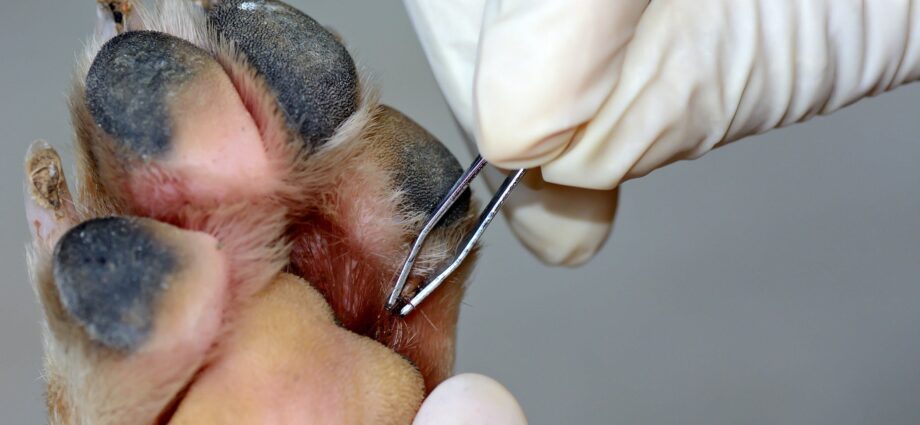Contents
Dog piroplasmosis: how to treat it?
Dog piroplasmosis, also known as “dog babesiosis”, is an infectious parasitic disease, however it is not contagious. What are the causes ? How to treat it and protect yourself from it? Find all our professional advice.
What is piroplasmosis in dogs?
Dog piroplasmosis, also called “dog babesiosis”, is an infectious, non-contagious parasitic disease. It is a disease of dogs, which cannot be transmitted to humans. It is caused by the multiplication in red blood cells of a parasite called “Babesia canis”. It is transmitted to dogs by ticks of the genus Dermacentor, and more anecdotally in utero or not transfusion. Piroplasmosis is clinically characterized by pyretic hemolytic syndrome. Piroplasmosis is a common and serious disease.
There are real foci of piroplasmosis. Indeed, the distribution of the disease is heterogeneous on the territory and evolves with the areas infested with ticks. These vary according to the seasons and changes in the biotope.
What are the symptoms of piroplasmosis?
Mode of action of the parasite
Babesia canis is an intraerythrocytic parasite, that is to say that it will penetrate and divide within red blood cells. This parasitosis triggers an increase in the temperature of the dog, which then has a fever. The presence of the parasite within the blood cells will deform them. Some blood cells will burst, resulting in severe anemia. The deformation of the other blood cells will also clog the blood capillaries, which will deprive the tissues of the oxygen necessary for their proper functioning. The animal then goes into shock, along with organ failure, hypotension and severe depression. We therefore speak of septic shock.
Symptoms
Before the first symptoms of the disease, incubation lasts about 1 week.
When the disease appears in its typical form, we note:
- A sudden onset, intense depression;
- A total loss of appetite in the animal;
- A fever of sudden onset;
- Anemia with increased levels of bilirubin and hemoglobin in the urine;
- Blood changes, including loss of white blood cells.
With piroplasmosis, there are many atypical forms. This is characterized by:
- Forms without fever, with an appetite maintained but diminished;
- Sometimes asymptomatic forms;
- Nerve or locomotor forms, with partial paralysis;
- Glomerulonephritis, due to the high demand on the kidneys for the elimination of red blood cell waste;
- Some exceptional, rarer forms (retinal hemorrhages, skin necrosis, etc.).
How is the diagnosis made?
Piroplasmosis is a disease that one must think about when dealing with a young animal exposed to tick bites, or living in one of the foci of piroplasmosis.
The definitive diagnosis can be made by your veterinarian. It is done by direct observation of the parasite, after carrying out a blood smear. The veterinarian will then find small oval, pear or rounded elements within the red blood cells. Be careful, however, if we do not find a parasite on the smear, we cannot necessarily rule out piroplasmosis from the diagnostic hypotheses, etc.
The prognosis for piroplasmosis varies from fairly good to very reserved. In the case of “classic” babesiosis, the prognosis is linked to anemia. If it’s dealt with on time, then it’s pretty good.
In “complicated” babesiosis, a pseudo-septicaemic syndrome is observed with general inflammation and multiple organ failure. The prognosis is therefore much more reserved, even with treatment.
Is there an effective treatment?
There is a specific treatment for piroplasmosis. This is an injection that kills the parasites. The improvement in the animal’s condition must be significant and rapid following this injection. However, it is essential to supplement it with symptomatic treatment. Depending on the case, a blood transfusion or therapeutic management of renal and hepatic insufficiency in the animal may be essential. Do not forget to rehydrate the animal either. Indeed, it is essential to correct the tissue nourishment defect, which is the cause of multiorgan failure.
What prevention solutions?
In prevention, it is important to limit parasitism by ticks. For this, “anti-tick” products in the form of a collar, spray, spot-on, lotion, etc.
A vaccine against piroplasmosis exists. Its efficiency is around 75 to 80%. Indeed, several species of Babesia exist, each transmitted by a different species of ticks. The vaccine does not protect against all of these species. In addition, due to the reproduction of ticks, several variants of Babesia can meet and it is possible that they recombine, which can explain some vaccine failures. Protection against ticks is therefore mandatory, even in vaccinated dogs.










